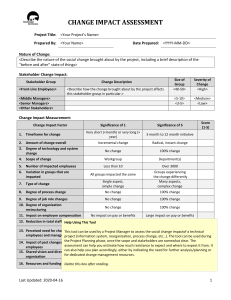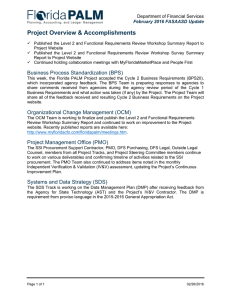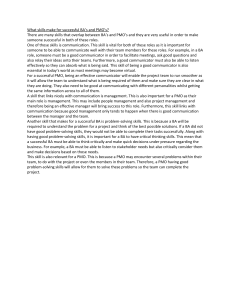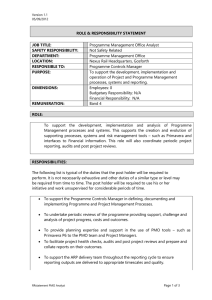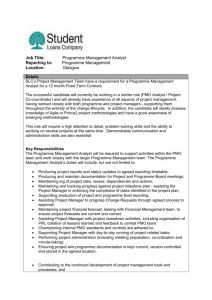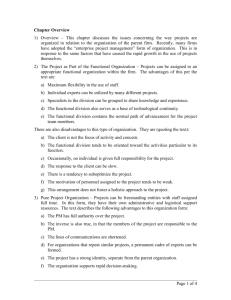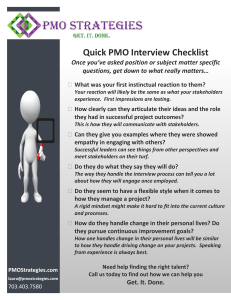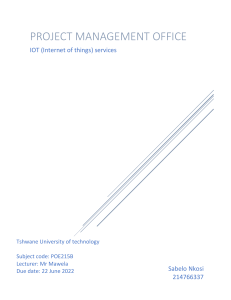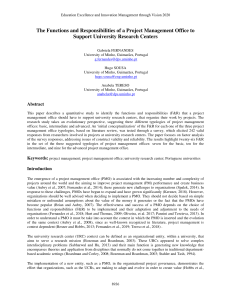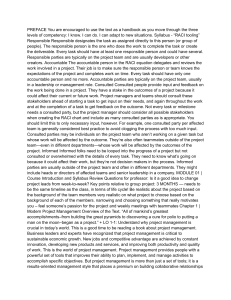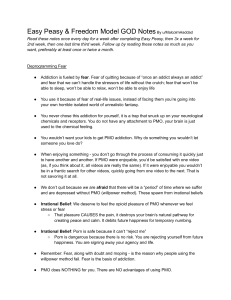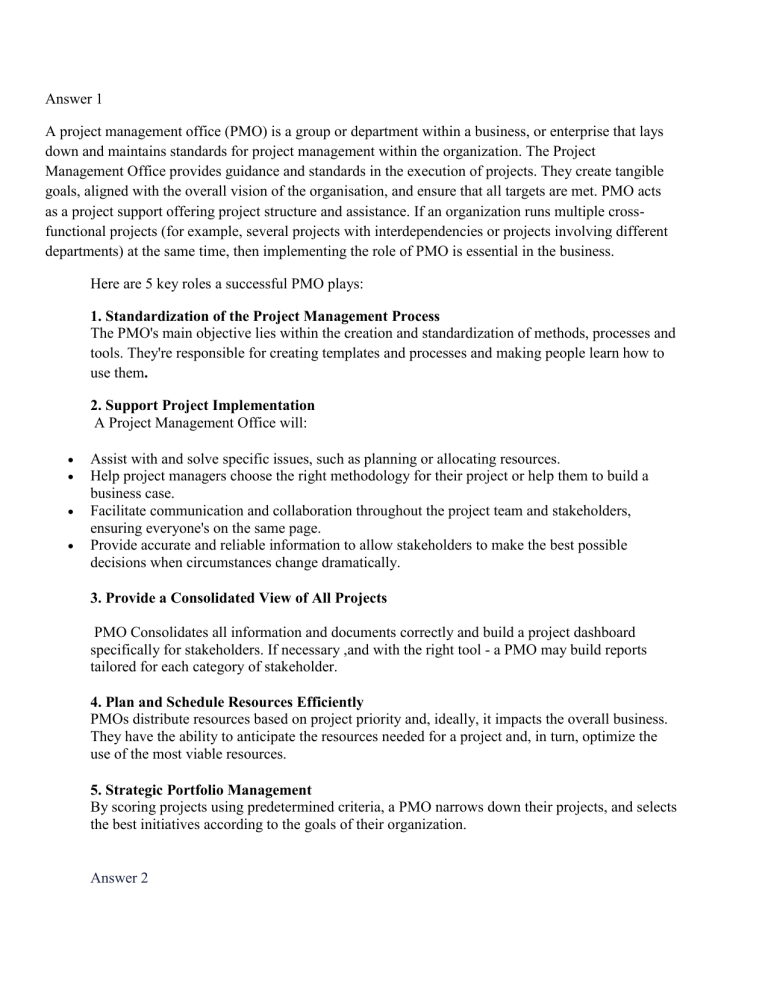
Answer 1 A project management office (PMO) is a group or department within a business, or enterprise that lays down and maintains standards for project management within the organization. The Project Management Office provides guidance and standards in the execution of projects. They create tangible goals, aligned with the overall vision of the organisation, and ensure that all targets are met. PMO acts as a project support offering project structure and assistance. If an organization runs multiple crossfunctional projects (for example, several projects with interdependencies or projects involving different departments) at the same time, then implementing the role of PMO is essential in the business. Here are 5 key roles a successful PMO plays: 1. Standardization of the Project Management Process The PMO's main objective lies within the creation and standardization of methods, processes and tools. They're responsible for creating templates and processes and making people learn how to use them. 2. Support Project Implementation A Project Management Office will: Assist with and solve specific issues, such as planning or allocating resources. Help project managers choose the right methodology for their project or help them to build a business case. Facilitate communication and collaboration throughout the project team and stakeholders, ensuring everyone's on the same page. Provide accurate and reliable information to allow stakeholders to make the best possible decisions when circumstances change dramatically. 3. Provide a Consolidated View of All Projects PMO Consolidates all information and documents correctly and build a project dashboard specifically for stakeholders. If necessary ,and with the right tool - a PMO may build reports tailored for each category of stakeholder. 4. Plan and Schedule Resources Efficiently PMOs distribute resources based on project priority and, ideally, it impacts the overall business. They have the ability to anticipate the resources needed for a project and, in turn, optimize the use of the most viable resources. 5. Strategic Portfolio Management By scoring projects using predetermined criteria, a PMO narrows down their projects, and selects the best initiatives according to the goals of their organization. Answer 2 The organizational structure my organization has is team based structure. A team organizational structure disrupts the traditional hierarchy, focusing more on problem-solving, cooperation, and giving employees more control. A team-based structure is an organizational structure where several teams work toward a common goal while performing their own specialized tasks. They encourage less hierarchy in their structure, allowing organizations more flexibility. The team-based organization structure includes a CEO, several department leaders such as human resources, project management, marketing, IT and finances. Within those departments, there are team leaders and team members who complete tasks based on their job duties and the overall role of their team within a project. Team based organizational structures offer some unique advantages including rapid flow of information and stronger communication. The needs of organizations are changing with changing market dynamics. The same traditional approach or a functional structure does not afford the same flexibility and agility as the modern team-based approach. Below are the advantages my businesses experience by adopting a team-based structure: Increases productivity, performance, and transparency Promotes a growth mindset Changes the traditional career models by getting people to move flexibly Values experience rather than seniority Requires minimal management Better communication Empowered professionals Encourages innovation More constructive competition Larger sense of community
